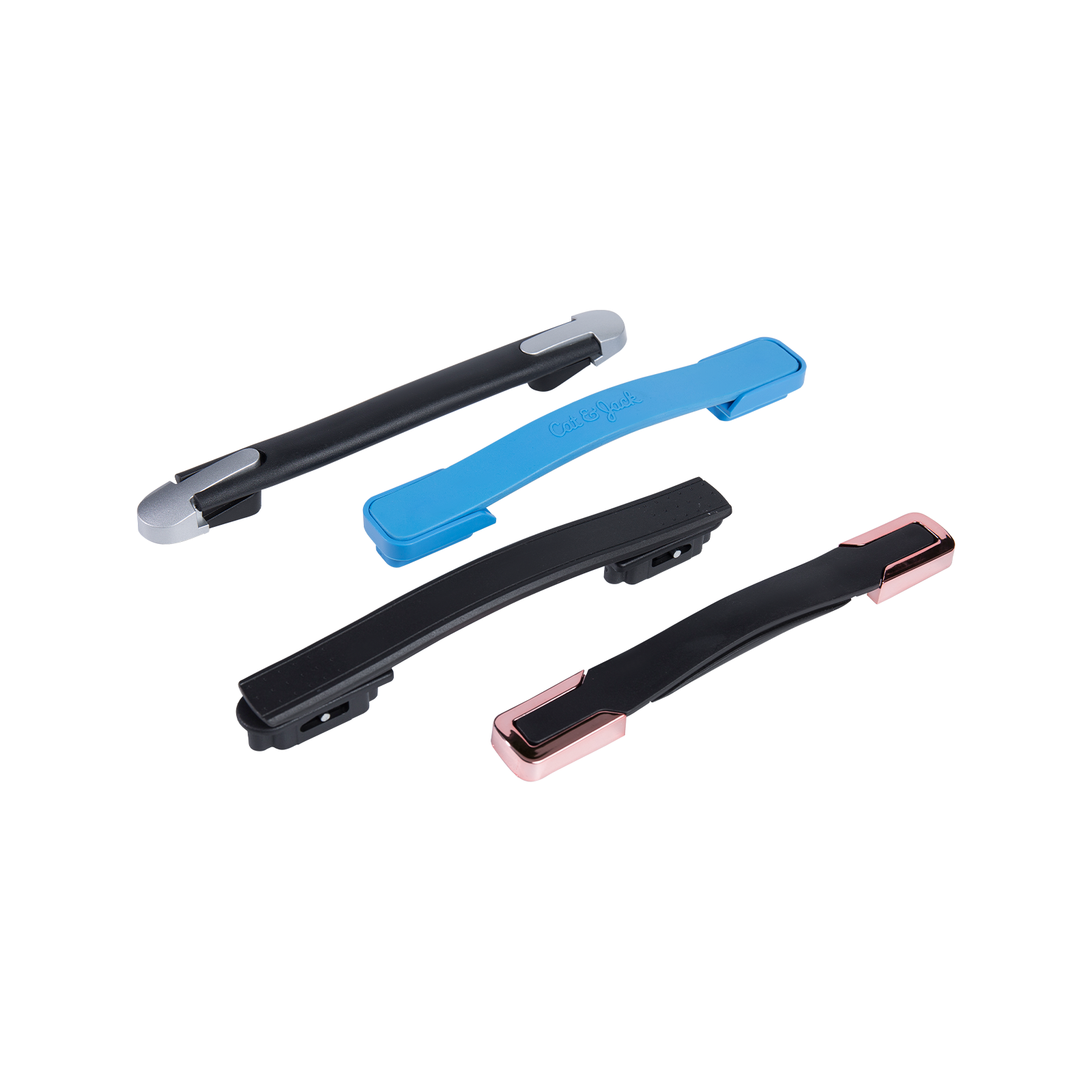In modern fast-paced life, suitcases have become an indispensable tool for people to travel. And one of the core components of suitcases, the trolley handle, directly affects the user experience and the overall quality of the product. In order to produce a durable and beautifully designed trolley handle, manufacturers need to rely on an important tool: the suitcase trolley handle mold.
A suitcase trolley handle mold is a mold specifically used for injection molding or die casting processes. Its main function is to produce the outer shell or internal structure of the suitcase trolley handle. These molds are usually made of high-strength steel and are precision-machined to ensure that the produced trolley handles meet strict design requirements and dimensional standards. Whether it is a home suitcase or a business travel suitcase, the quality of the trolley handle is directly related to the portability and service life of the suitcase, so the design and manufacture of the trolley handle mold is crucial.
In large-scale production, the trolley handle mold can ensure that the shape, size and performance of each trolley handle are consistent. This consistency not only improves the aesthetics of the product, but also ensures that users will not be troubled by quality problems during use.
Improve the strength and durability of the tie rod
The design of the tie rod mold directly affects the structural strength of the tie rod. High-quality molds can produce tie rods that are resistant to bending and wear, so that they can withstand frequent stretching and contraction operations and meet the needs of long-term use.
Support diversified designs
As consumers' demands for the appearance and functions of luggage are diversified, the design of tie rod molds is also constantly innovating. For example, some high-end luggage uses hidden tie rods or adjustable height designs, which require complex molds to achieve.
Reduce costs and improve efficiency
The use of high-quality tie rod molds can reduce the scrap rate in the production process, thereby reducing material waste and labor costs. At the same time, automated injection molding equipment combined with precision molds can greatly improve production efficiency and shorten delivery cycles.
Manufacturing process of luggage tie rod mold
Mold design
Mold design is the first step in the entire manufacturing process. Designers need to draw detailed 3D models based on customer needs and the functional characteristics of the tie rod, and conduct simulation tests to ensure the feasibility of the mold.
Material selection
Tie rod molds are usually made of high-quality steel (such as P20, H13, etc.), which have good wear resistance and corrosion resistance and can maintain stable performance in long-term production.
Precision machining
The mold is processed with high precision using advanced technologies such as CNC machine tools, electrospark machining (EDM) and wire cutting. This link determines the surface finish and dimensional accuracy of the mold, which affects the quality of the final product.
Surface treatment
In order to extend the service life of the mold, the mold surface is usually hardened or plated. This not only enhances the wear resistance of the mold, but also prevents rust and corrosion.

Mold trial and adjustment
Before formal production, the mold needs to undergo multiple mold trials and debugging to ensure that the produced tie rod meets the design requirements. If problems are found, engineers will optimize the mold structure in time.
Application scenarios of luggage tie rod molds
Luggage tie rod molds are widely used in the production of various types of luggage, including but not limited to the following scenarios:
Household luggage: Luggage used by ordinary families usually focuses on cost-effectiveness, and tie rod molds need to take into account both economy and practicality.
Business luggage: Luggage designed for business people pays more attention to lightness and high-end feeling, so the pull rod mold needs to support complex shape and fine surface treatment.
Children's luggage: The pull rod of children's luggage is usually short and brightly colored, and the mold design needs to consider safety and fun.
Special purpose luggage: Such as outdoor adventure boxes, airline check-in boxes, etc., the pull rods of these suitcases require higher load-bearing capacity, and the mold design is also more complex.
Pay attention to the qualifications of the mold supplier
Choose a mold manufacturer with rich experience and good reputation to ensure mold quality and after-sales service.
Precision processing technology and high-quality materials are the key factors that determine the life of the mold, and technologically advanced suppliers should be given priority.
Customized service capabilities
Luggage of different brands and models may require unique pull rod designs, so it is particularly important whether the mold supplier has strong customization capabilities.
Cost-effectiveness considerations
Although price is an important reference factor, it cannot simply pursue low prices. Although high-quality molds have high initial investment, they can save more costs for enterprises in the long run.
As the core tool for luggage production, the suitcase tie rod mold not only determines the quality of the tie rod, but also indirectly affects the market competitiveness of the entire luggage. As consumers' requirements for travel products continue to increase, the technological innovation and process upgrade of tie rod molds will become an important driving force for the development of the industry. For manufacturers, investing in high-quality tie rod molds is not only a commitment to product quality, but also the key to winning market competition.




 Español
Español











